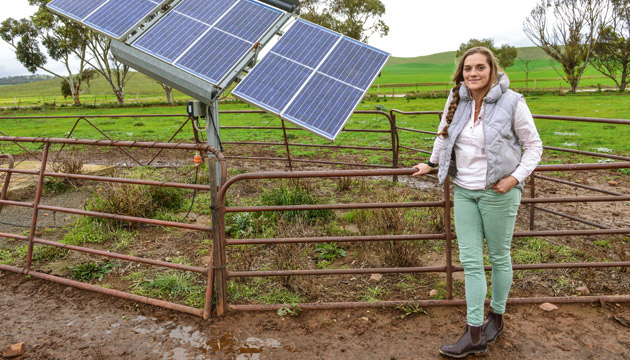The ingenuity, resourcefulness and abundant space of rural Australia are being harnessed to power our nation in new and innovative ways.
Story by Ken Eastwood
David Linke stands shin-deep in a green paddock of young canola on the rolling sand and clay hills of the Yorke Peninsula, SA. It’s a reasonable crop, but not the sort he’ll get too excited about – it will probably only come in at about two tonnes a hectare when it’s harvested in a couple of months. This third-generation grain and legume farmer has seen 58 harvests come and go here, battling snails, weeds, droughts and high winds, so it’s pretty much business as usual.
But a new $100 million bioenergy plant that is set to be built in one of his paddocks is getting his heart racing. The plant will burn some of the waste straw and stubble that is left after his harvests, for which he’ll be paid $85 a tonne. And in doing so, it will produce 10–20 megawatts (MW) of power – enough to power up to 20,000 homes.
“I think it’s an exciting thing to happen,” David says, standing beside a stack of 200 tonnes of straw he’s got ready to go, even though the plant is more than two years from completion. “It’s an industry that complements the local industry around – this is a farming area. Even though some people don’t want to sell their straw to the plant, it’s still not a negative to them.”
David says grain farmers in the area usually leave some straw on the ground after harvest to protect young plants and put nutrients back into the soil, but overproduction of straw is a problem, and farmers sometimes choose to burn it on the ground to get rid of it, dealing with snails and weeds at the same time. As an experiment, David gathered 3.1 tonnes of straw per hectare after last year’s harvest “There were about two tonnes of straw left on the ground and that’s enough to still put back into the ground,” he says. “It surprised me, because when I cut it I looked behind and I thought, ‘There’s not much there’.”
Yorke Biomass Energy chair and driver of the project, Terry Kallis, says about 15 farmers around Ardrossan have signed up, guaranteeing a straw supply, although more are needed to reach the 60,000 tonnes of straw per annum needed for a 10MW plant. “It’s taken quite a lot to get people to the table in terms of supply,” Terry says.
“This new project has never been done in Australia before so no-one knows how it’s going to go,” David says. “Some people are hanging off and seeing how it goes, which is hard. You need production to get it started.”
David has guaranteed he will supply the plant with 1000 tonnes a year and says he is excited at the new income stream for his 19-year-old son when he returns to the farm, and the employment the plant could bring, including the need for contract balers, truckies and others. “There’s a chance of about 40 people being employed at the plant,” he says. “You support these projects just for that reason alone.”
The Yorke Peninsula scheme is just one of many innovative new power-generation initiatives being developed throughout rural Australia. From sprawling solar plants and towering wind farms popping up like the new season’s crops, to a tomato farm near Port Augusta, SA, which has 23,788 mirrors focusing the sun’s rays on a solar tower to provide heat and power for 20 hectares of greenhouses, the bush is finding the space and the solutions to help solve our energy needs.
This story excerpt is from Issue #109
Outback Magazine: Oct/Nov 2016










